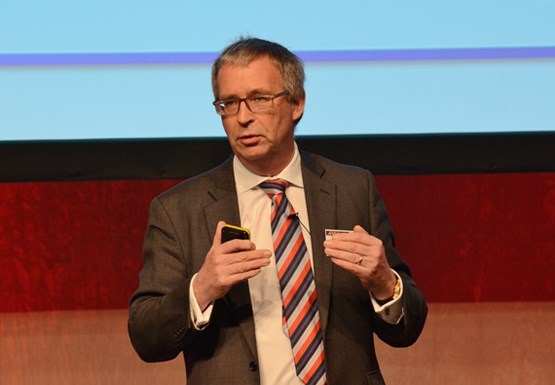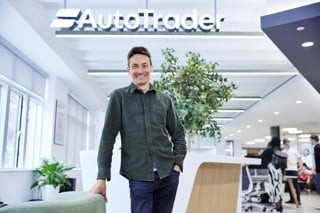After seven months in which car retailers and manufacturers have shifted their retail focus and driven forward with new digital solutions in the face of COVID-19, the changes have to keep coming.
In his latest opinion blog post ICDP managing director Steve Young calls for the two automotive factions to set aside "mistrust, suspicion, and occasional confrontation" to develop a new franchised retail model in the near-term.
Read on to learn more about his plan for the sector's ongoing reform:
In recent months, members of the ICDP Research Programme have flagged some priority questions for us such as whether COVID has advanced digitalisation and changes in network structures, and whether there are lessons learned from the lockdown experience that can be applied to permanently reduce dealer fixed costs.
None of us have a crystal ball that allows us to anticipate the continuing COVID-related disruption, but we have tried to provide some answers, and provide a change agenda for both OEMs and dealers.
Today we have published a Management Briefing on the subject for our members, so today in this blog, I wanted to provide a few highlights.
Rush to reform
Some of the changes dealers made in both sales and aftersales turned out to be more effective than the standard processes they replaced, or generated higher customer satisfaction.
OEMs and dealers both rushed to improve the digital sales experience and physical processes changed to suit, whilst aftersales also introduced new procedures which in some cases offer customers an improved service compared to traditional arrangements.
OEMs have also relaxed some of their standards, reporting requirements and audit processes, and this has saved dealer overhead without – as yet – any reported downsides.
Looking at the two major fixed cost elements of property and people, in the short term, actions can generally only be taken on people costs and other operating overheads.
We need “kaizen” or “lean dealer” thinking applied to the whole dealership, reflecting previous ICDP work, though adoption has been disappointingly low.
OEMs need to play their part in maintaining and even extending the flexibility in standards and reporting that they have shown during the pandemic, but given that greater freedom, it is then up to dealership management to look more critically at their operations and headcount.
Dealer property cost is less easy to address in the short term, as it is a sunk investment.
However, if OEMs enable change by reducing some of the standards that arguably never mattered to car buyers, this opens the door to dealers to make adjustments as and when the opportunity raises itself.
Supply and delivery
After a long period of neglect, the last several months appear to have reminded OEMs of the need to manage the supply and demand balance more effectively than they have done in the recent past.
The processes and systems already exist from the pre-global financial crisis period to operate new vehicle supply chains in much more effective ways than reduce stocking costs but also improving transaction pricing.
Digitalisation is central to improving both the near term and longer term dealer model.
It is one of the fundamental drivers of change, but needs to be designed in conjunction with more effective organisations and processes rather than just adding a digital layer to an inefficient model.
The foundation for digitalisation is to be found in the name – it must be built on digits, or data. The greater degree of data sharing, the more that can be done to improve the platforms and tools that sit around shared data including online transaction platforms, virtual showrooms and flexible multimodal communications.
This needs to be accompanied by investment in people, either by improving the skills of existing staff or changing the profile of all future recruitment so that the mix of digitally skilled staff is progressively improved.
The number of dealership franchise points and the number of investors who own them have been gradually reducing over recent years across the mature European markets, although OEM-led restructurings have been more cautious than the scale that consumer behaviour with respect to maximum drive times would allow.
Grasp the nettle
This reluctance to “grasp the nettle” has been due to a number of factors, including too much traditional thinking that customers make buying decisions in dealerships, whereas we know that over half of new car buyers have already made their brand choice before any dealer visit.
There are also perceptions of a ‘first mover disadvantage’ and a concern that a smaller network will inevitably mean loss of share, both of which we challenge. We believe that OEMs ignoring or delaying decisions around future network structure is wrong, and that clarity and honesty is required now so that dealer investments can be planned accordingly with confidence.
Due to the pressures on the sector at present, it is easy to take a defensive approach to ride out the storm, waiting for calmer times before making big decisions.
In some cases OEMs do not yet have a view of what their overall future vision will be.
Whilst the development and implementation of a new omni-channel strategy is a multi-year process, it is made up of a number of discrete and to some extent independent pieces of the overall jigsaw. In the early stages, the different elements such as improving data management, introducing more engaging online channels or improving the quality of people do not differ whether the final destination is an improved franchise model or a more radical agency-based model.
There is therefore no reason to delay determining who the future partners will be, allowing the resources of both OEM and dealer investor to be focused on the business that will continue.
Rather than being disruptive at a time of crisis, it is actually an effective way of focusing effort on what matters.
Delivering these near-term actions cannot be done by either OEMs or dealers in isolation from each other.
It requires a shared view of how things should develop over the next two to three years, to build new capabilities and reduce the cost base.
It may be a naïve hope that recent improved collaboration should continue, but this will be needed to deliver on a number of priorities.
Redescovering lost diciplines
For OEMs, they need to rediscover the lost disciplines of effective new vehicle supply chain management, develop a clear digital roadmap that supports the omni-channel journey in an incremental and affordable way for all parties, conduct a critical review of all factors that drive cost into dealerships, refocus investment in the areas that customers have demonstrated they care about, and work with the partners who will form the core of the network in five-to-10 years’ time and develop towards a true omni-channel capability.
If OEMs deliver, then dealers can reasonably be expected to put their efforts into a corresponding change agenda, of collaborating to create omni-channel processes, be proactive in looking for opportunities to reduce unit fixed costs in the areas where they have influence, expanding their digital presence, and building an internal team who embrace data as the driver of better business decisions, whilst recognising that the need for the human touch remains.
Against a history of mistrust, suspicion, and occasional confrontation, it may be unrealistic to think that the OEMs and dealers can work together on these complimentary change agendas.
However, if collectively the existing industry is going to transition to the type of collaborative model that is needed to deliver an integrated omni-channel experience, then there is no choice but to plan and implement this path together.
As ICDP has demonstrated now for almost thirty years, it is possible to see the big picture, along the whole value chain. It’s time to apply those lessons before it’s too late.



















Login to comment
Comments
No comments have been made yet.